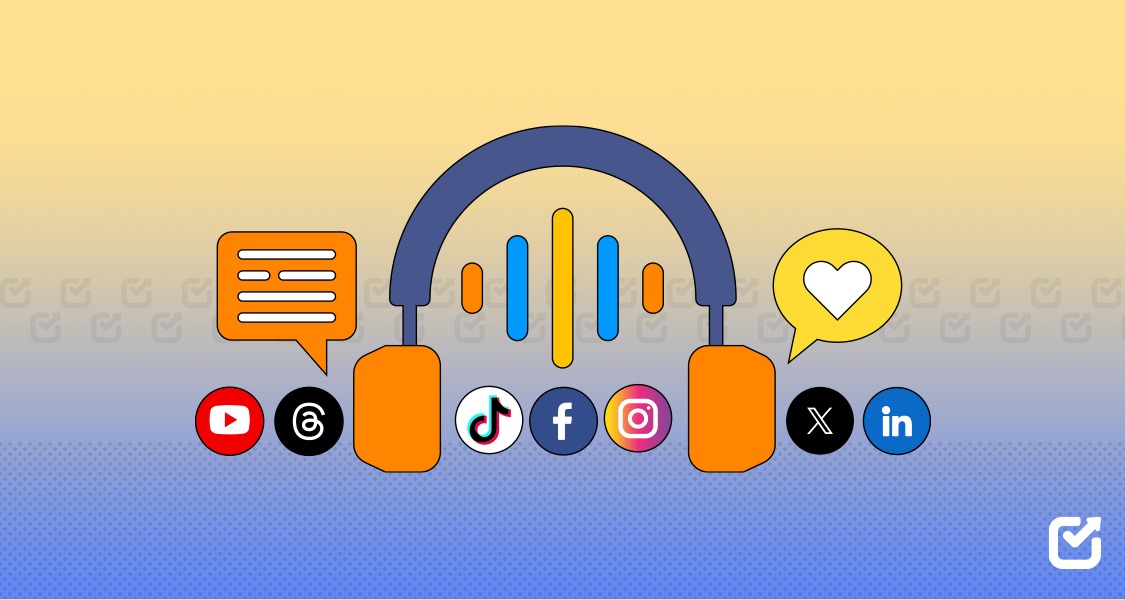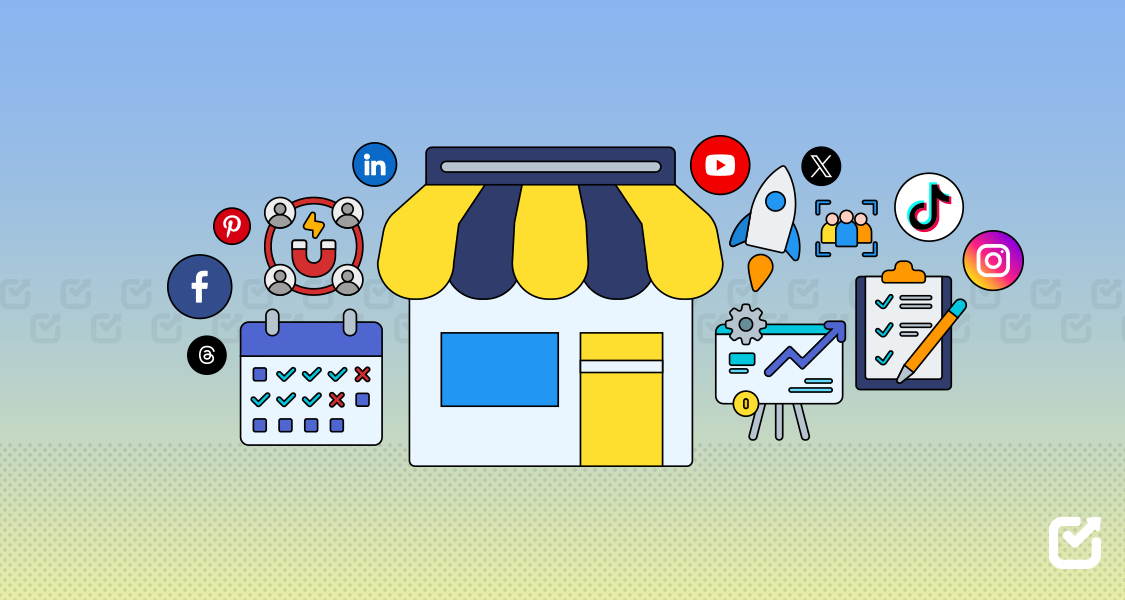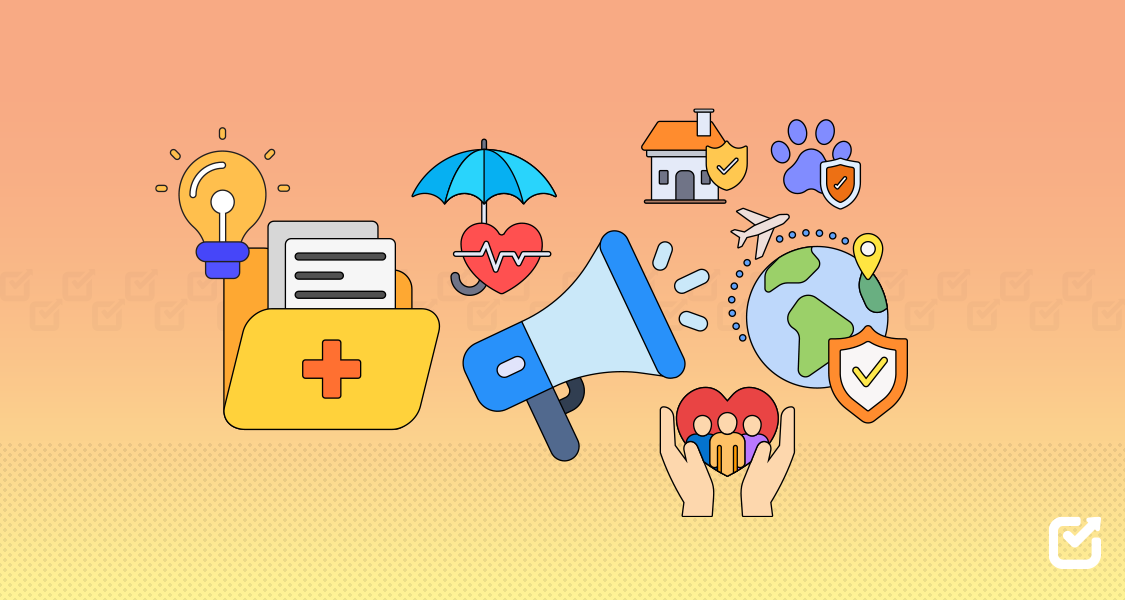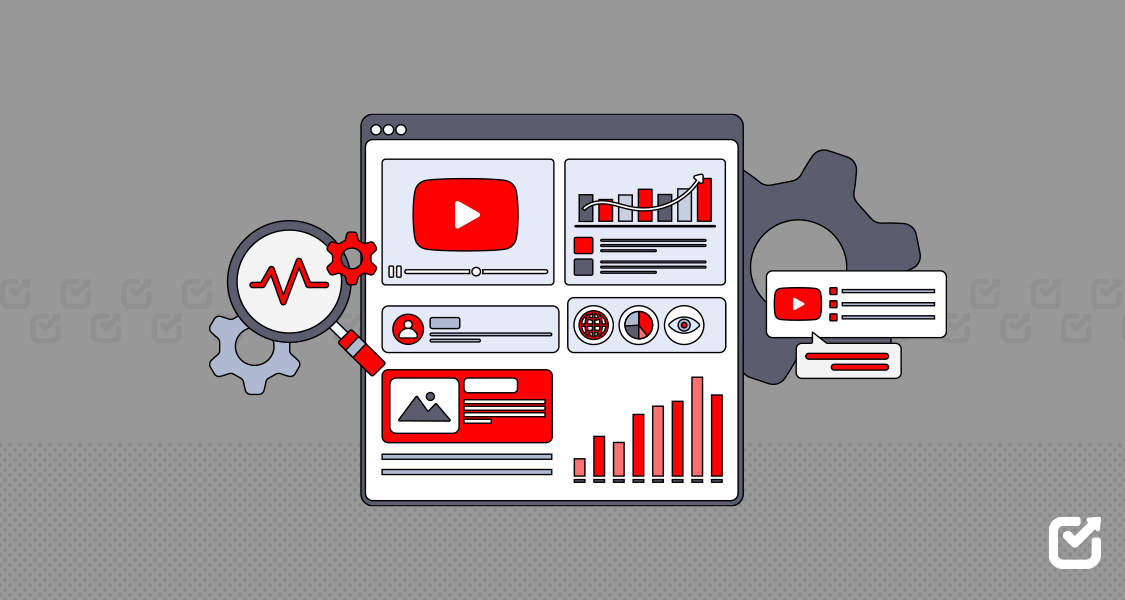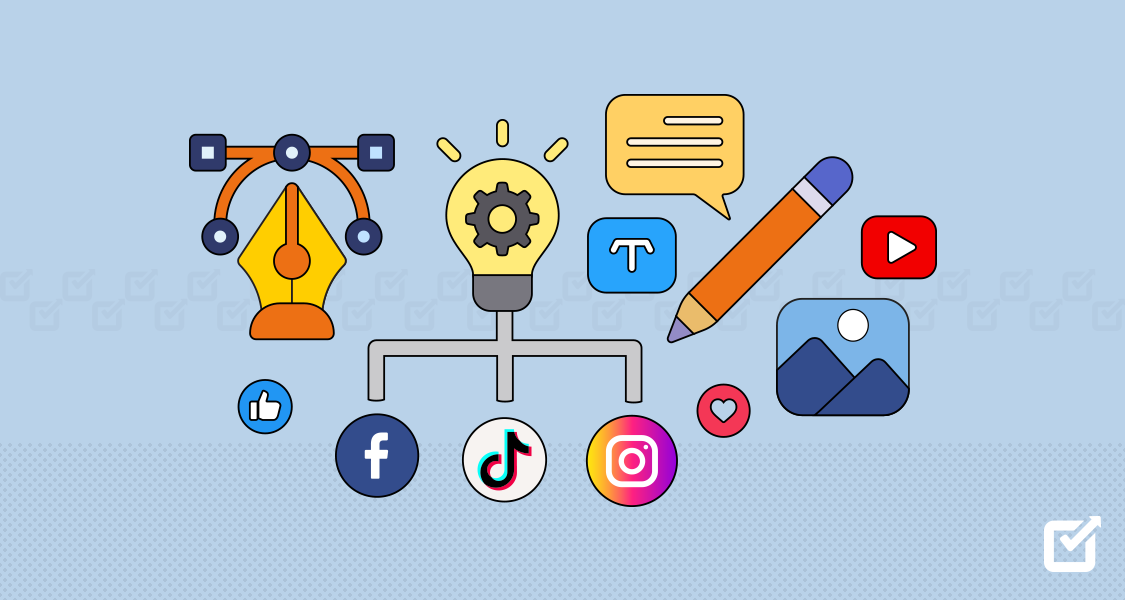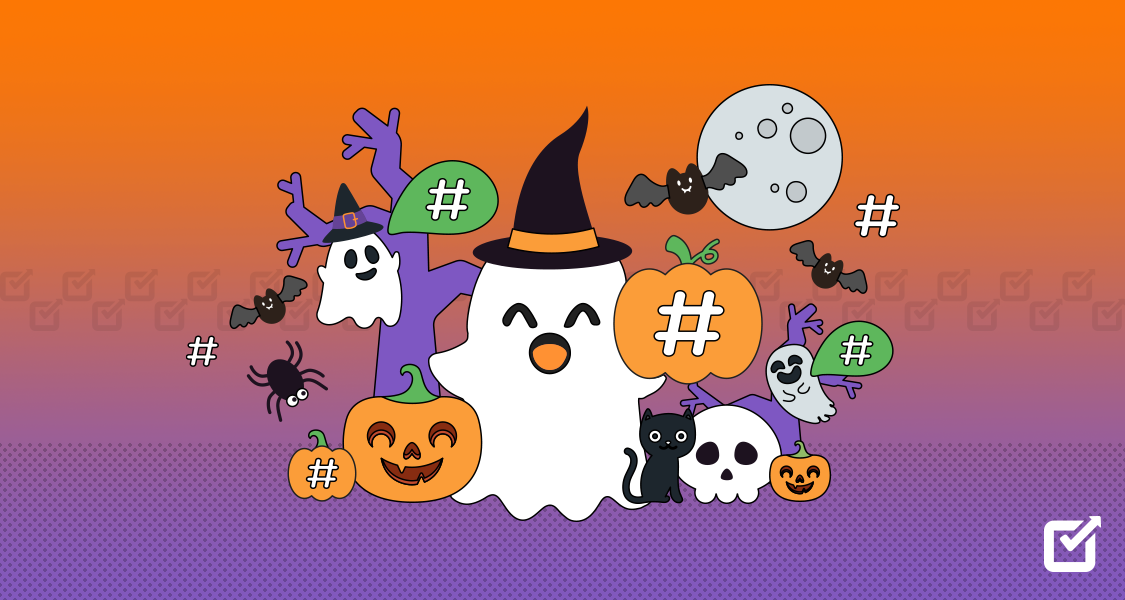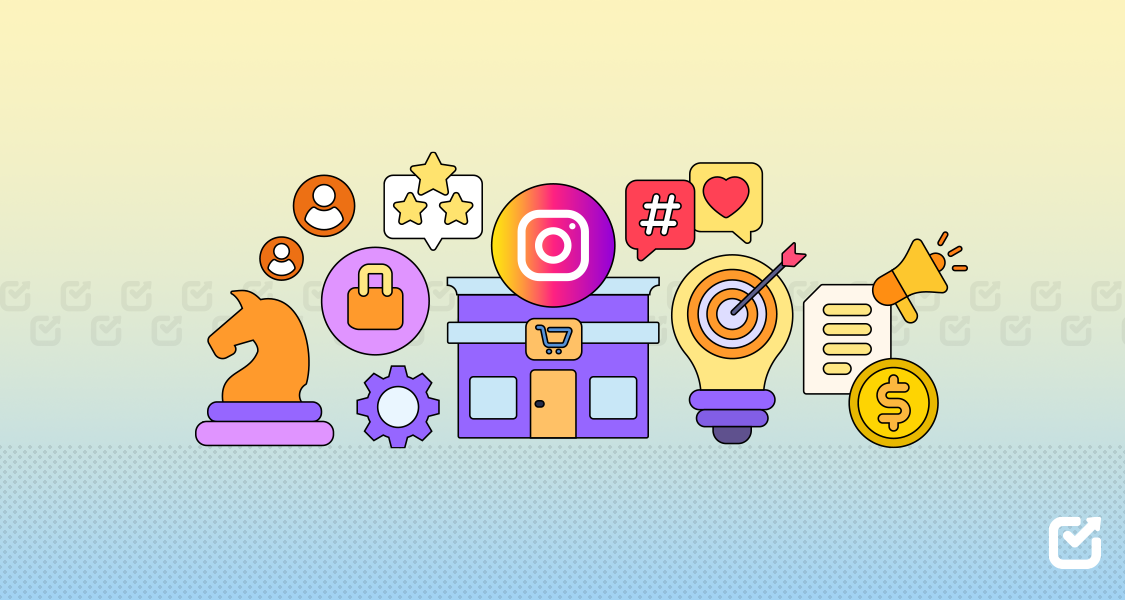What is social listening, and how can it impact your brand?
Have you ever wondered about the reviews or emoji-filled comments about your brand online? That’s where social listening comes in—it’s a smarter way to decode the chatter and turn it into something valuable.
Social listening isn’t about vanity metrics like likes or shares. It’s about staying relevant, responsive, and ready to act.
Whether it’s spotting the next big opportunity, addressing a brewing PR issue, or simply connecting better with your audience, this strategy is your ticket to smarter decision-making.
Social Listening tools help you track, analyze, and act on what’s being said online.
Ready to get started? Let’s dive into the what, why, and how of social listening and discover how it can transform your brand strategy.
Short Summary
- Social listening involves tracking online conversations to understand sentiment, trends, and audience needs, going beyond basic metrics.
- It helps brands improve customer engagement, spot trends, manage crises, and gain insights about competitors.
- Social monitoring tracks metrics, while social listening analyzes the context and sentiment behind the data.
- To make the most of social listening, you must identify goals, track keywords, collect data, analyze sentiment, and act on insights.
- You can also use alerts, analyze trends, track competitors, and make it a continuous process.
- Social Champ leads with real-time tracking, sentiment analysis, and competitive insights.
Why Social Listening Matters for Brands
Social listening plays a pivotal role in modern marketing strategies. Here’s why:
- Understand Customer Sentiment: Gauge public perception of your brand and fine-tune your messaging.
- Enhance Customer Engagement: Respond to customer concerns, queries, and feedback promptly.
- Identify Trends Early: Spot emerging trends to stay ahead of competitors.
- Crisis Management: Mitigate potential PR issues by identifying negative sentiment early.
- Competitive Insights: Understand what customers are saying about your competitors and refine your strategy.
Brands that leverage social listening can create more personalized, data-driven campaigns, driving better results and stronger customer loyalty.
Social Listening vs. Social Monitoring: Key Differences Explained
Ever wondered if you’re really hearing what your audience is saying about your brand online?
There’s a big difference between tracking what’s being said and truly understanding it. That’s where social listening and social monitoring come in.
While these terms might sound similar, they’re two very different approaches—and knowing the difference can give your brand a real edge.
What Is Social Monitoring?
Social monitoring is like having a watchful eye on your social media.
It tracks mentions, tags, comments, likes, and shares. It’s about keeping tabs on activity and staying alert to what’s happening around your brand.
Key Features of Social Monitoring:
- Track Mentions in Real-Time: Know who’s talking about you and when.
- Customer Service Support: Respond quickly to queries or complaints.
- Measure Engagement: See how well your posts and campaigns are performing.
- Focus on Numbers: Count likes, comments, and shares to measure social success.
For example, imagine someone tweets about your product, tagging your brand. Social monitoring notifies you so you can reply, thank them, or answer a question right away. It’s all about being responsive.
What Is Social Listening?
Social listening goes deeper. It doesn’t just track what’s being said—it helps you understand why it’s being said and what it means.
It’s like listening for the bigger picture: what your audience feels, what trends are emerging, and what your competitors are up to.
Key Features of Social Listening:
- Analyze Sentiment: Is the vibe positive, negative, or neutral?
- Spot Trends Early: Find out what’s buzzing in your industry.
- Learn from Competitors: See how people talk about others in your space.
- Think Big Picture: Understand the context behind conversations.
Say you notice multiple customers complaining about your product’s durability. With social listening, you don’t just respond—you dig into the feedback, identify patterns, and improve your product. It’s about fixing the root cause, not just patching the problem.
Featured Article: Mastering Social Media Listening: Strategies, Tools, and Getting Started
How Social Listening Works: A Step-by-Step Guide
Social listening isn’t just about tracking online chatter; it’s a structured process that turns raw conversations into actionable insights.
If you’re ready to harness the power of social listening, here’s a detailed step-by-step guide to get you started.
Define Objectives
Before diving in, it’s essential to know what you want to achieve with social listening. Setting clear goals will help you focus your efforts and make the insights meaningful.
Common Objectives
- Analyze Brand Sentiment: Understand how people feel about your brand—positive, negative, or neutral.
- Spot Emerging Trends: Identify popular topics or hashtags to stay ahead of the curve.
- Monitor Competitors: Keep tabs on what people are saying about your competitors to find opportunities or threats.
- Track Campaign Performance: Measure how your audience is responding to specific campaigns.
Tip: Be specific with your goals. Instead of a vague “understand the audience better,” aim for something actionable, like “identify the top three customer pain points this quarter.”
Identify Keywords and Topics
Social listening revolves around finding the right conversations, which means tracking the right keywords and topics.
What to Track
- Brand-Specific Keywords: Your brand name, product names, and common misspellings.
- Industry Keywords: Terms relevant to your industry, niche, or trending topics.
- Competitor Mentions: Keywords related to your competitors and their products.
- Hashtags and Phrases: Trending hashtags or phrases that align with your brand or campaigns.
Example:
If you’re a skincare brand, you might track keywords like “hydrating moisturizer,” “glow skin,” or hashtags like #SkinCareTips and #NoMakeupLook.
Choose the Right Tools
Manually sifting through online conversations isn’t practical, so choosing the right tools is crucial. Social listening tools streamline data collection, sentiment analysis, and insights.
What to Look for in a Tool
- Comprehensive Coverage: Tracks conversations across social media, blogs, forums, and news sites.
- Sentiment Analysis: Identifies the tone of conversations (positive, negative, neutral).
- Customizable Alerts: Notify you about mentions or spikes in activity.
- User-Friendly Interface: Easy to set up and navigate.
Top Pick: Social Champ offers robust tracking, sentiment analysis, and actionable insights—all in one intuitive platform.
They’re Talking About You. Are You Listening?
Don’t miss the juicy details! Social Champ’s social listening tools help you catch the buzz, ride the trends, and outsmart the competition.
Try it today!
Collect Data
With tools in place, it’s time to gather the data. Social listening tools collect conversations from a variety of online platforms, including:
- Social Media: Twitter, Instagram, Facebook, LinkedIn, and YouTube
- Forums: Reddit, Quora, and niche community boards.
- Blogs and News Sites: Industry blogs and media outlets that mention your brand or competitors.
Tip: Keep an eye on emerging platforms where your audience might be active. Social listening isn’t just about where you are—it’s about where your audience is.
Analyze Sentiment
Once the data is collected, it’s time to make sense of it. Sentiment analysis helps you understand the emotions behind the conversations.
Types of Sentiment
- Positive: Customers praising your products, campaigns, or services.
- Negative: Complaints, frustrations, or issues raised by your audience.
- Neutral: Mentions that don’t carry strong emotional tones but provide context.
Example:
A tweet like “I love how gentle this cleanser feels!” reflects positive sentiment, while “Why does this moisturizer leave my skin so oily?” indicates a negative sentiment.
Top Tips for Effective Social Listening
Social listening is a powerful way to understand your audience, improve your marketing strategies, and gain a competitive edge.
But to truly unlock its potential, you need a structured approach. Let’s dive deeper into these actionable tips for making social listening work effectively for your brand.
Track Competitors
Keeping an eye on your competitors is not just smart—it’s essential. Social listening allows you to monitor what your customers are saying, giving you insights into their strengths and weaknesses.
For instance:
- Are people raving about a feature your competitor offers? Consider adding it to your own product lineup.
- Are customers frustrated with their service? Step in with a solution that addresses their pain points.
Competitor analysis through social listening doesn’t mean copying; it’s about learning what works and what doesn’t so you can position your brand as the better choice.
Set Alerts for Keywords
Nowadays, missing a conversation can mean losing an opportunity. Setting up alerts for your brand name, product names, hashtags, and industry keywords ensures you’re always in the know.
- Brand Mentions: Stay informed when someone talks about your brand—good or bad.
- Trending Hashtags: Jump into discussions around hashtags that align with your industry or campaigns.
- Industry Buzzwords: Keep tabs on emerging topics to stay relevant.
These alerts help you respond faster and ensure you never miss the chance to engage with your audience.

Eavesdropping, But Make It Marketing.
Find out what your audience really thinks with Social Champ’s social listening features. Track mentions, spot trends, and act like a pro.
Engage Proactively
Social listening isn’t just about sitting back and observing—it’s about taking action. Proactive engagement means stepping into conversations where your voice adds value.
- Respond to compliments to show appreciation.
- Address complaints to turn unhappy customers into loyal advocates.
- Join trending conversations to boost your brand’s visibility.
For example, if your audience is discussing a new trend, share your insights or create content around it to show that your brand is tuned in. Engaging in this way builds trust and strengthens your relationship with your customers.
Combine Data With Context
Tracking metrics like mentions and hashtags is important, but numbers alone don’t tell the whole story. Context is key to understanding why people are talking about your brand or industry.
- Is a sudden spike in mentions due to positive buzz, or is it tied to a negative incident?
- Are customers praising a specific feature, or are they asking for improvements?
By digging deeper into the context behind the data, you can extract meaningful insights and make informed decisions that resonate with your audience.
Use Sentiment Analysis
Sentiment analysis helps you understand the emotional tone of conversations around your brand. Are people excited about your latest launch, or are they frustrated with a feature?
Regularly analyzing sentiment can help you:
- Address Concerns Early: Spot and resolve issues before they escalate into larger problems.
- Amplify Positivity: Capitalize on positive sentiment to create new campaigns or strengthen customer relationships.
- Understand Shifting Perceptions: Monitor how public perception changes over time, especially after a major campaign or product update.
Sentiment analysis provides the “why” behind the buzz and allows you to act with confidence.
Stay Consistent
Social listening isn’t a one-off task; it’s an ongoing commitment.
Trends change, customer needs evolve, and industry dynamics shift constantly. Staying consistent ensures you’re always in tune with your audience.
- Schedule regular check-ins to analyze data and refine strategies.
- Monitor changes in sentiment to adapt your messaging quickly.
- Use insights to guide product development, marketing, and customer support.
Consistency in social listening helps you anticipate changes, seize opportunities, and navigate challenges with ease.
The Best Social Listening Tools to Use in 2025
With so much being said about your brand, competitors, and industry, it’s impossible to manually track and analyze every conversation.
That’s where social listening tools come in, giving you the power to monitor, analyze, and act on insights effectively.
Here’s a breakdown of the top social listening tools to help you elevate your strategy in 2025.
-
Social Champ (Top Pick)
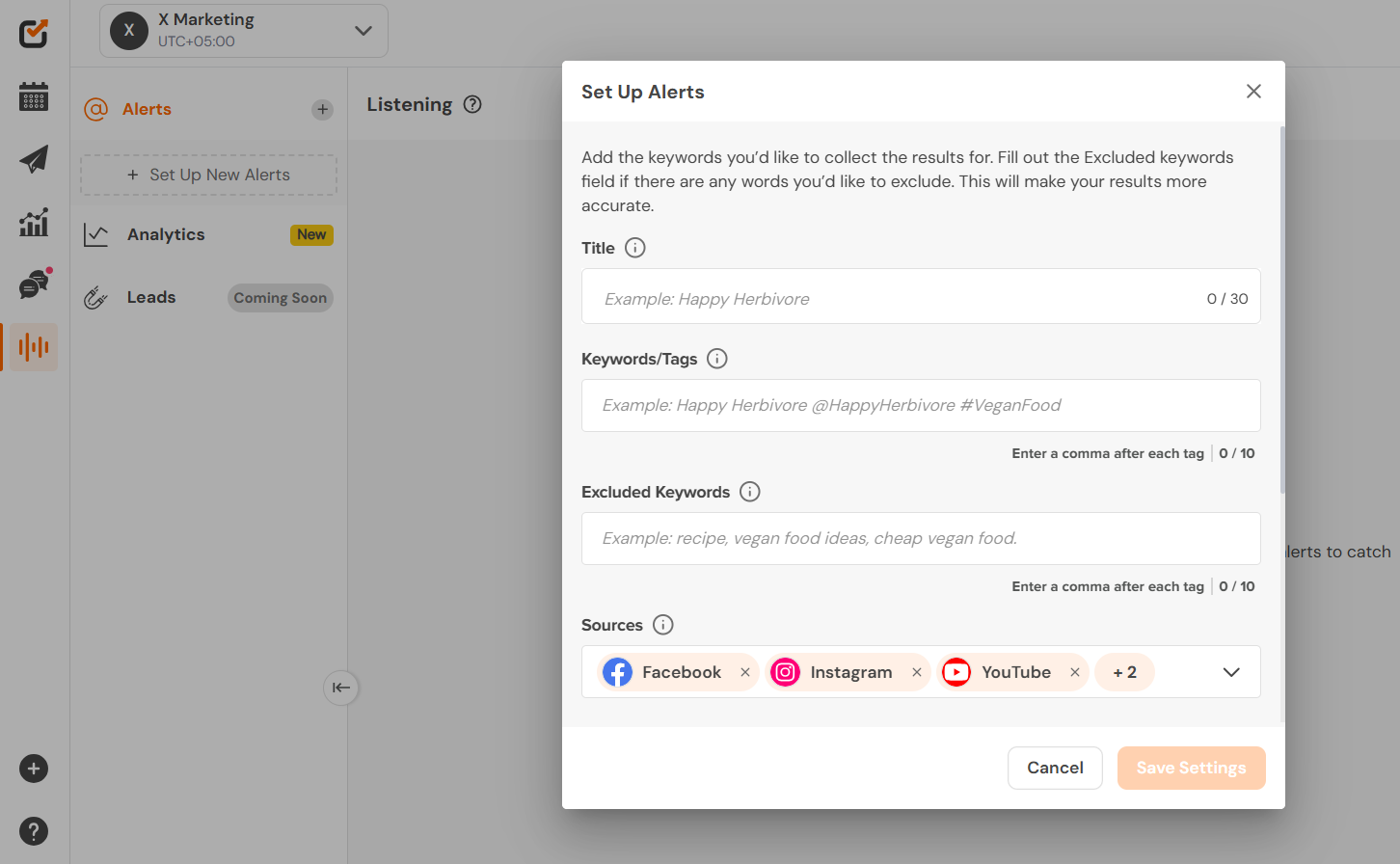
Social Champ’s Social Listening Tool Features:
- Real-time Monitoring: Track mentions, comments, and trends across multiple platforms to stay updated.
- Sentiment Analysis: Gauge the tone of conversations to understand public perception—positive, negative, or neutral.
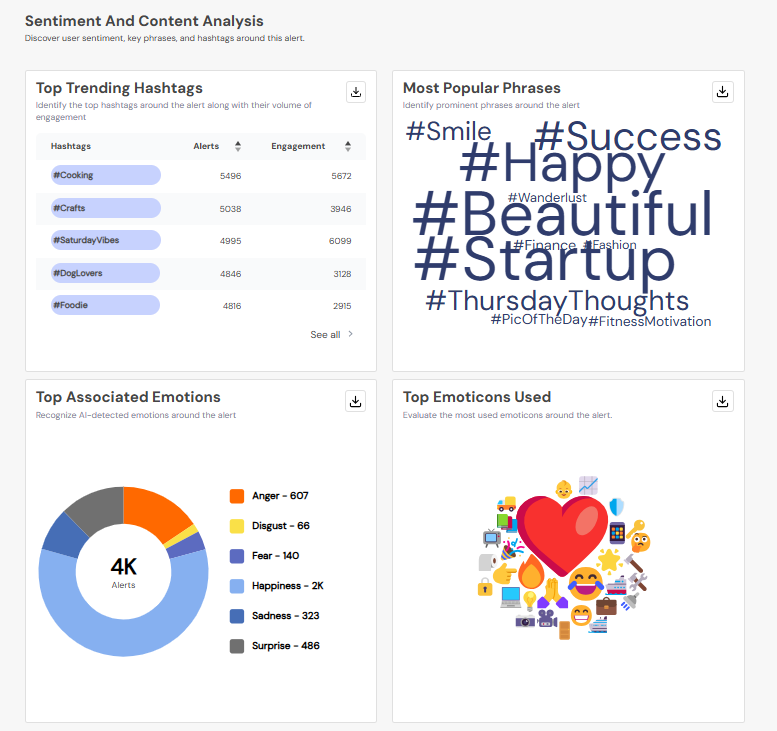
Social Champ’s Sentiment and Content Analysis - Alerts for Mentions and Competitors: Get notified about brand mentions or when competitors are trending so you can act fast.
Why Choose It?
Social Champ is designed with ease of use in mind, making it perfect for marketers who want actionable insights without the learning curve.Its robust features, like sentiment analysis and competitor tracking, help you make data-driven decisions in real-time.
Whether you’re new to social listening or looking for a reliable, comprehensive tool, Social Champ delivers everything you need in one place.

Stop Guessing, Start Listening!
Your audience is talking—are you paying attention? Use Social Champ’s social listening tools to track the buzz, decode the chatter, and level up your strategy.
-
Brandwatch
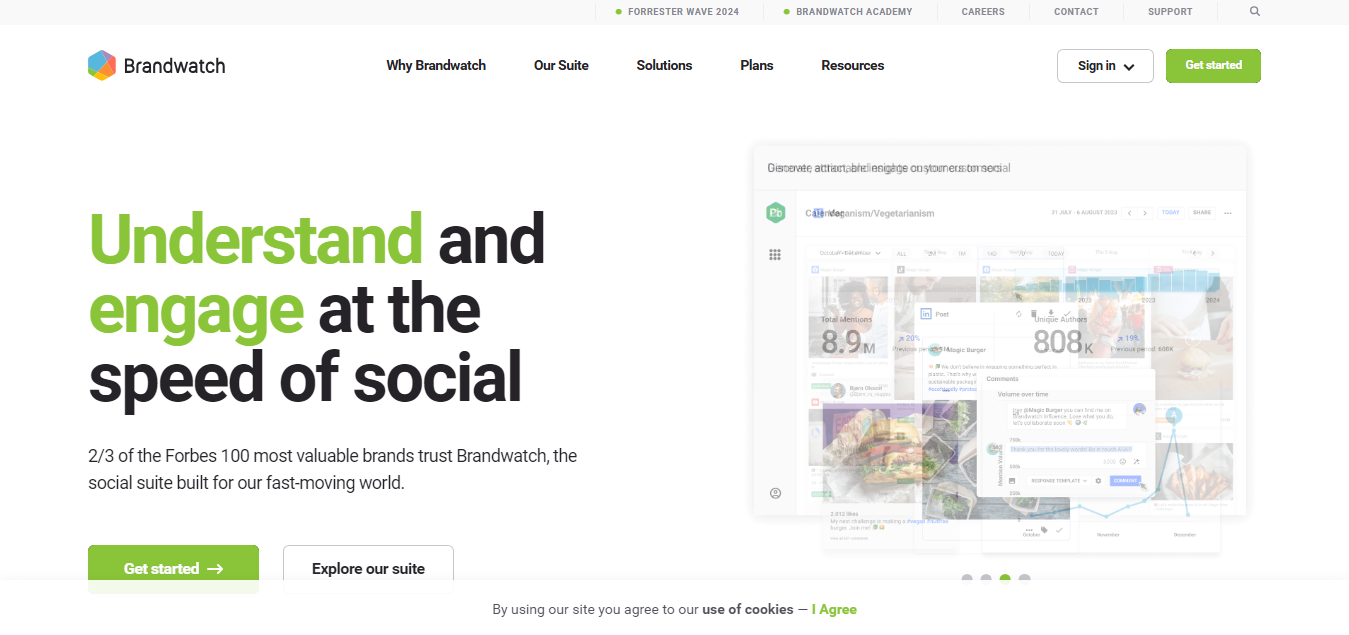
Brandwatch’s Webpage Features:
- Advanced Sentiment Analysis: Dive deep into audience sentiment with detailed reports that highlight trends and patterns.
- In-Depth Reporting: Generate comprehensive reports that give you a clear understanding of your brand’s performance and audience perception.
Why Use It?
Brandwatch is ideal for enterprises with complex needs.Its advanced reporting and sentiment analysis features make it a powerful choice for brands managing a large volume of data across multiple regions or industries.
If your focus is on precision and scalability, Brandwatch is worth exploring.
-
Sprout Social
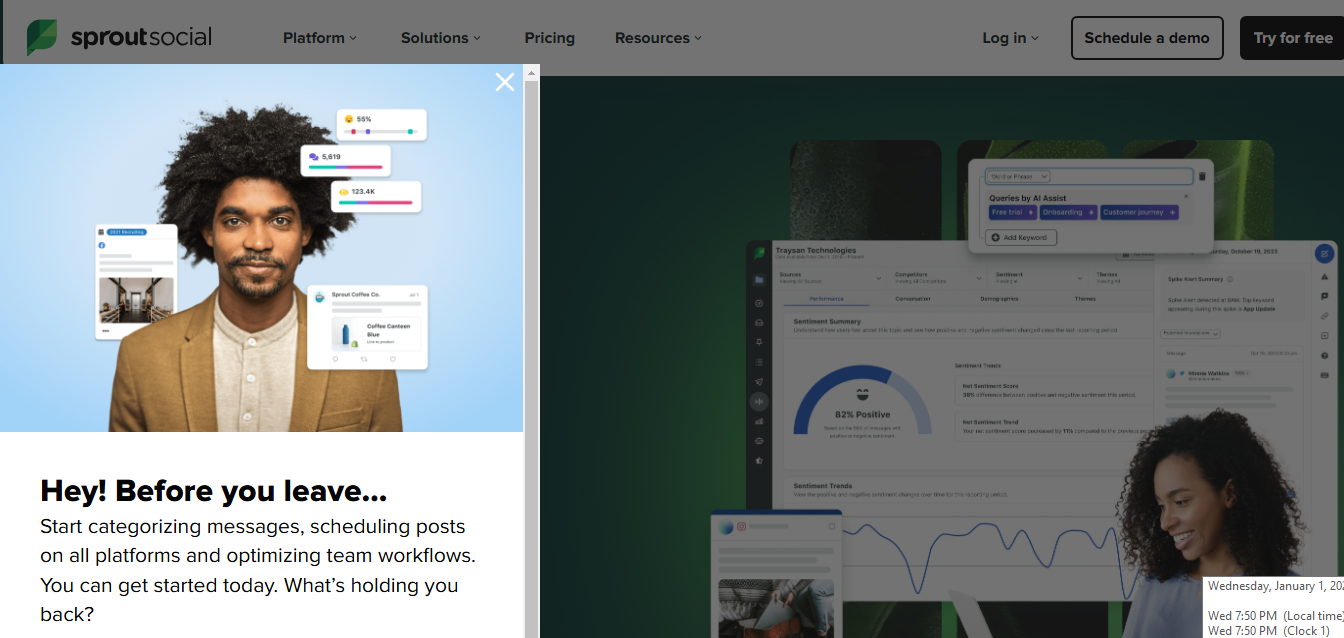
Sprout Social’s Webpage Features:
- User-Friendly Interface: Easy-to-navigate platform designed for seamless social listening.
- Reporting Tools: Offers strong analytics and reporting features to measure the effectiveness of your campaigns.
Why Use It?
Sprout Social strikes a great balance between functionality and simplicity, making it an excellent option for small to medium-sized businesses. It provides all the necessary features to track conversations and measure engagement, without overwhelming you with unnecessary complexity. -
Hootsuite Insights
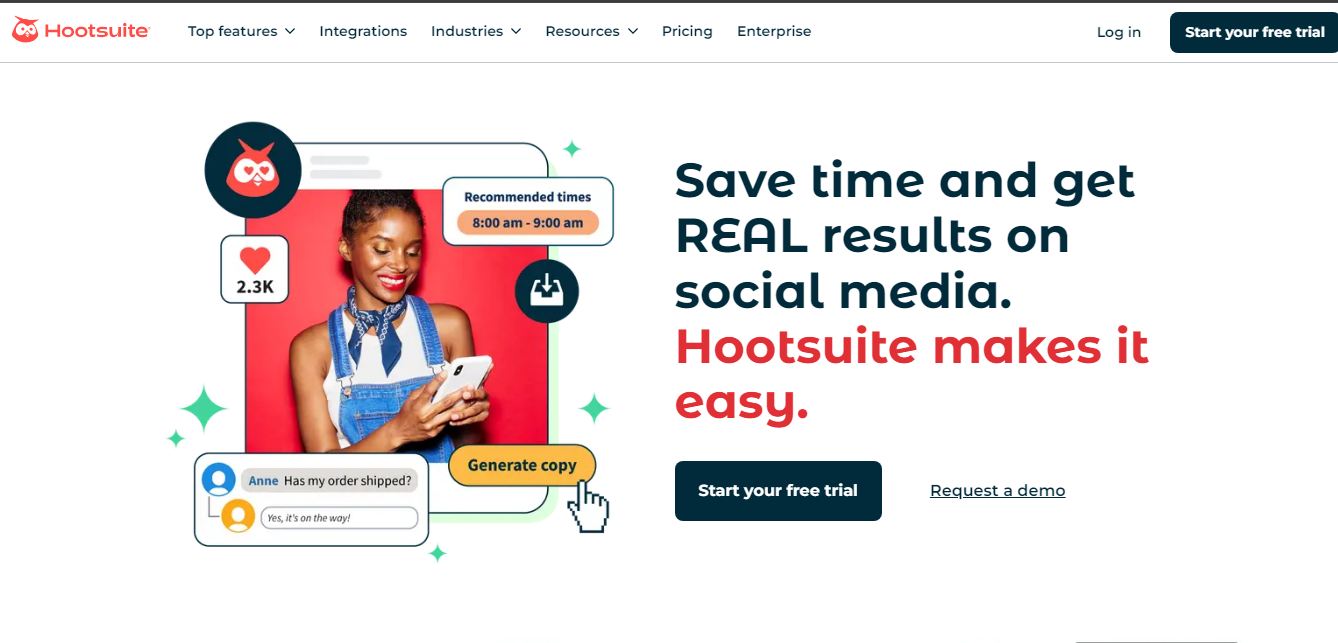
Hootsuite’s Webpage Features:
- AI-Driven Insights: Leverage artificial intelligence to analyze conversations and extract valuable insights quickly.
- Seamless Integration: Works effortlessly with Hootsuite’s scheduling tools, providing a comprehensive social media management solution.
Why Use It?
Hootsuite Insights is perfect for teams already using Hootsuite for their social scheduling needs. Its integration allows you to track social media performance while staying on top of trends and audience sentiment, all within one platform. -
Microsoft Text Analytics API
Microsoft Text Analytics API leverages the power of the cloud to deliver sentiment analysis with precision and scalability.
Features:
- Cloud-Based Sentiment Analysis: Offers a scalable, on-demand solution for processing text data across platforms.
- Multi-Language Support: Enables businesses to analyze sentiment in multiple languages, ideal for global operations.
Why Choose It?
For businesses already using Microsoft Azure, the Text Analytics API integrates seamlessly, offering a cost-effective and efficient sentiment analysis solution. Its scalability and language support make it a versatile tool for various industries.Best For: Businesses operating within the Microsoft Azure ecosystem and those requiring global sentiment analysis.
-
Meltwater
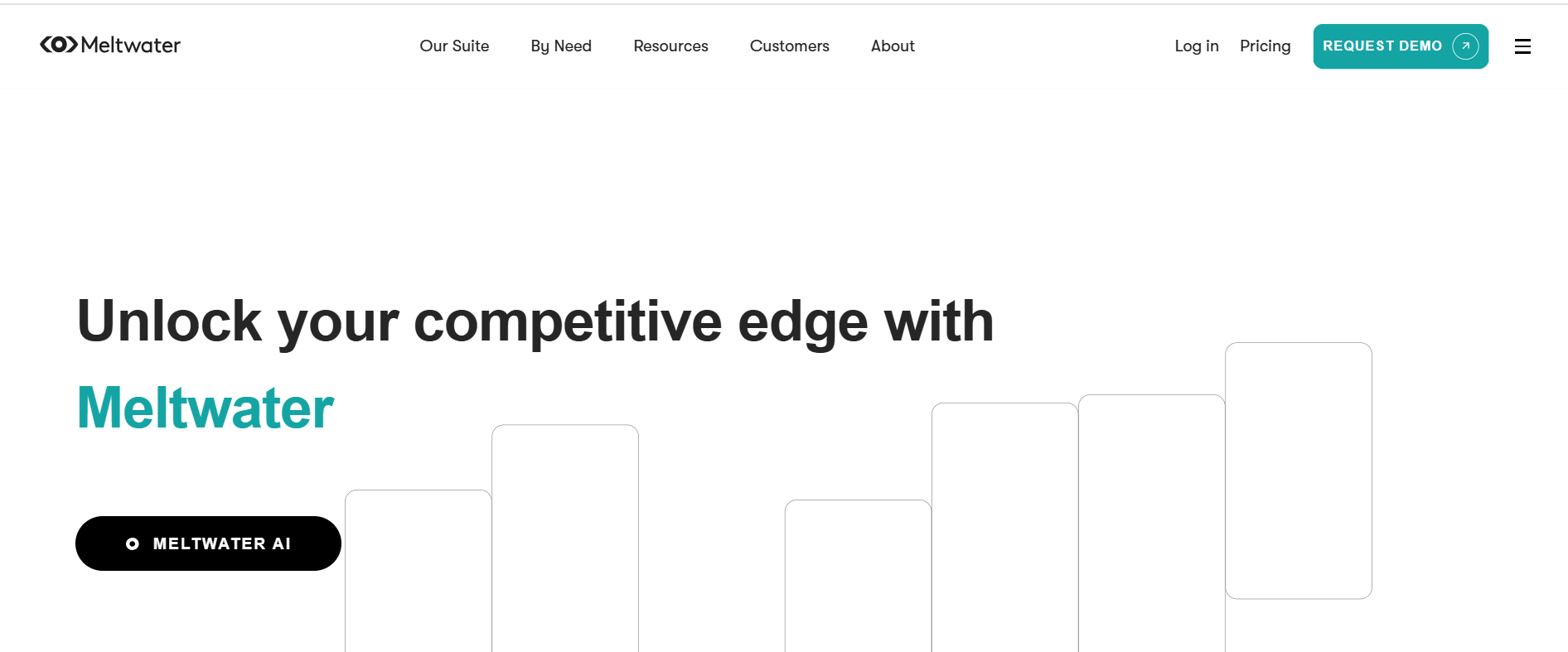
Meltwater’s Webpage Meltwater combines media monitoring with sentiment analysis, making it a powerful tool for PR and marketing teams.
Features:
- Media Monitoring: Tracks news articles, blogs, and social media mentions to provide comprehensive sentiment insights.
- Competitor Analysis Tools: Offers insights into competitor sentiment to help refine strategies.
Why Choose It?
Meltwater’s dual focus on sentiment analysis and competitor tracking makes it an invaluable asset for brands looking to enhance their public relations and marketing campaigns. It’s especially useful for identifying PR risks and opportunities.Best For: PR and marketing teams aiming to monitor media sentiment and outperform competitors.
-
IBM Watson Natural Language Understanding
IBM Watson’s Natural Language Understanding tool provides deep sentiment and emotion analysis tailored for industry-specific applications.
Features:
- AI-Powered Sentiment Analysis and Emotion Detection: Delivers nuanced insights, identifying emotions such as joy, anger, and sadness in text.
- Industry-Specific Solutions: Customizable for various sectors, including healthcare, finance, and retail.
Why Choose It?
IBM Watson stands out for its ability to provide detailed emotion detection and tailor solutions to specific industries. It’s ideal for businesses that need customized sentiment analysis to address unique challenges.Best For: Businesses requiring advanced, industry-specific sentiment insights.
-
Talkwalker
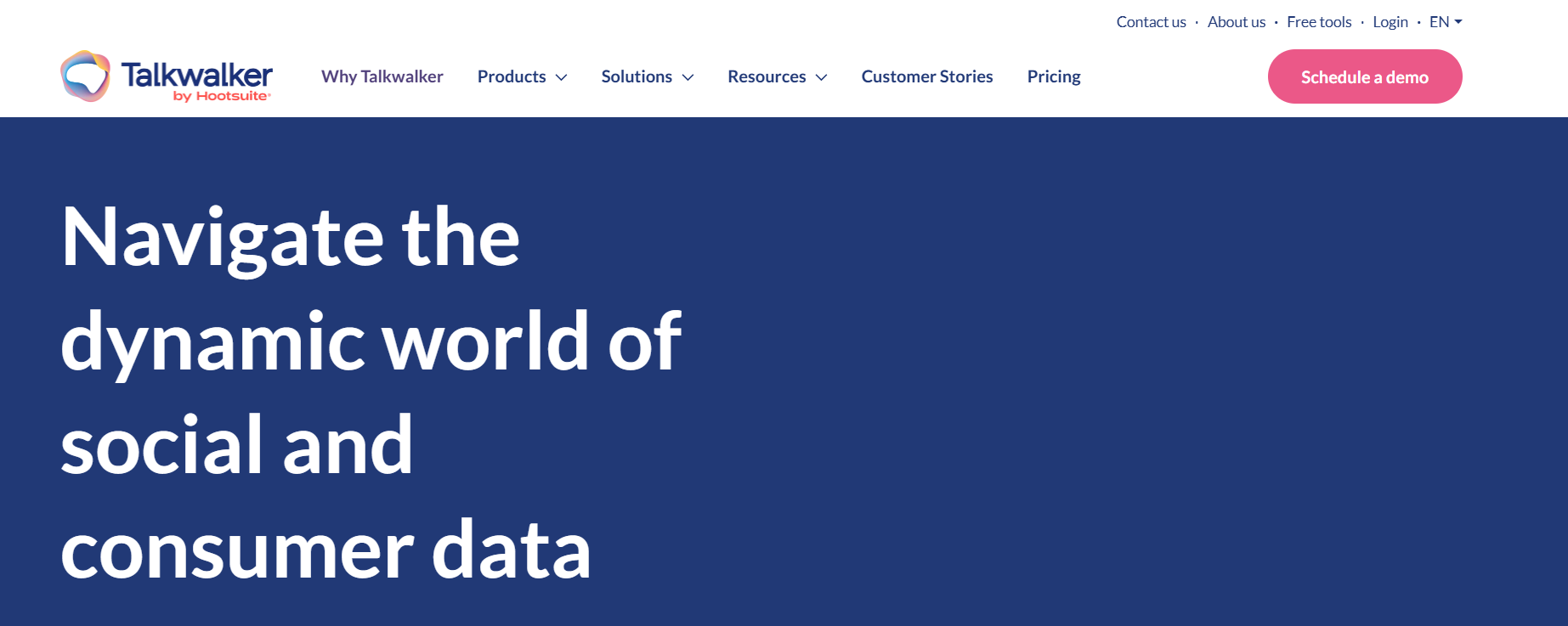
Talkwalker’s Webpage Talkwalker is a comprehensive tool that integrates visual and text sentiment analysis, making it ideal for brands focused on social listening and influencer marketing.
Features:
- Visual and Text Sentiment Analysis: Analyzes both written content and visual data, such as images and videos, for a complete sentiment picture.
- Influencer Tracking: Identifies key influencers and tracks their impact on brand sentiment.
Why Choose It?
Talkwalker’s ability to analyze visual data sets it apart, making it particularly useful for brands leveraging visual content.Its influencer tracking further helps brands align with the right advocates for positive sentiment.
Best For: Brands prioritizing social listening, PR, and influencer marketing.
-
NetBase Quid
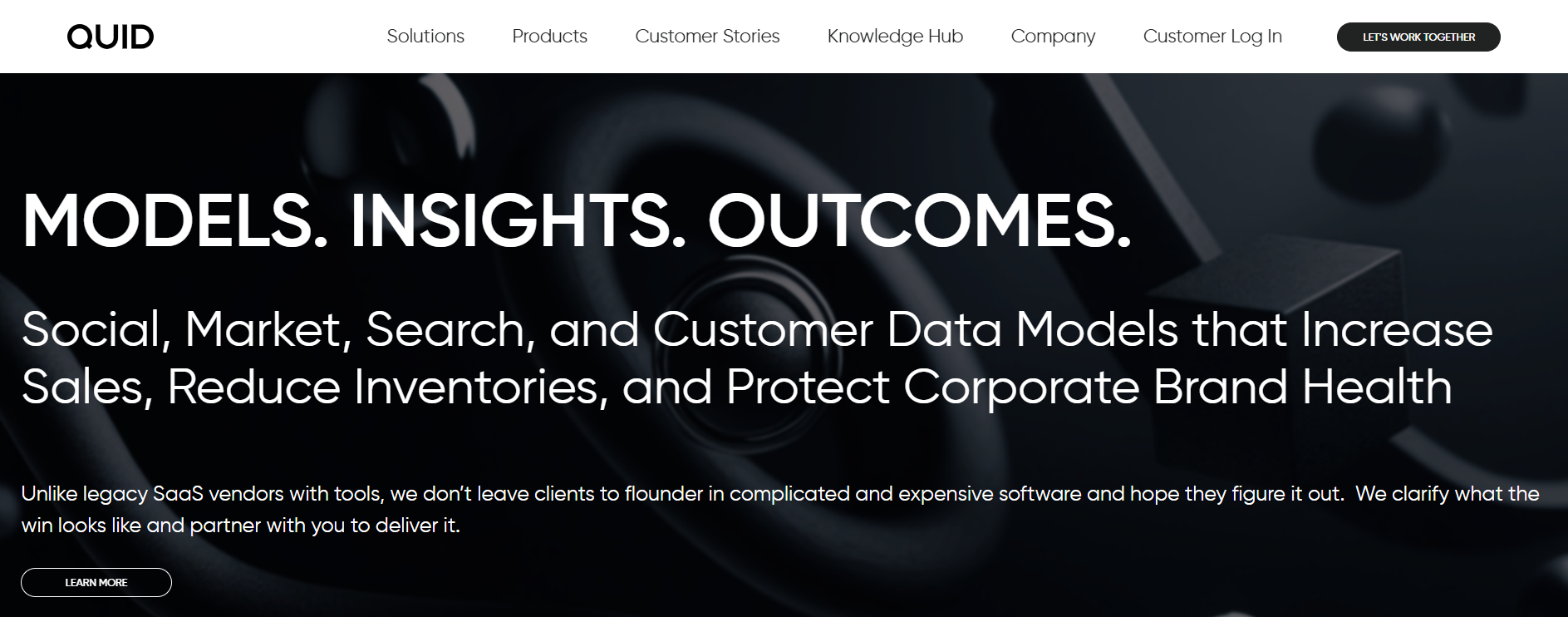
NetBase Quid’s Webpage NetBase Quid provides advanced sentiment analysis for large-scale brand reputation management, offering real-time insights for enterprise needs.
Features:
- Advanced Sentiment Analysis: Tracks brand perception across various channels, providing a comprehensive overview of sentiment.
- Real-Time Alerts: Sends instant notifications for changes in sentiment, helping businesses address issues proactively.
Why Choose It?
NetBase Quid’s enterprise-grade features make it perfect for monitoring large-scale conversations and protecting brand reputation. Its real-time alerts ensure businesses can act quickly to mitigate risks or leverage opportunities.Best For: Enterprises managing brand reputation across multiple channels and large datasets.
Conclusion
Learning what is social listening and how it can help with your brand marketing is a critical strategy for businesses that want to stay relevant and responsive.
By understanding your audience’s needs, tracking trends, and analyzing sentiment, you can create campaigns that truly resonate.
Whether you’re just starting or looking to refine your efforts, tools like Social Champ make it easier to turn insights into impact. Don’t just listen—act on what you hear and watch your brand grow.
